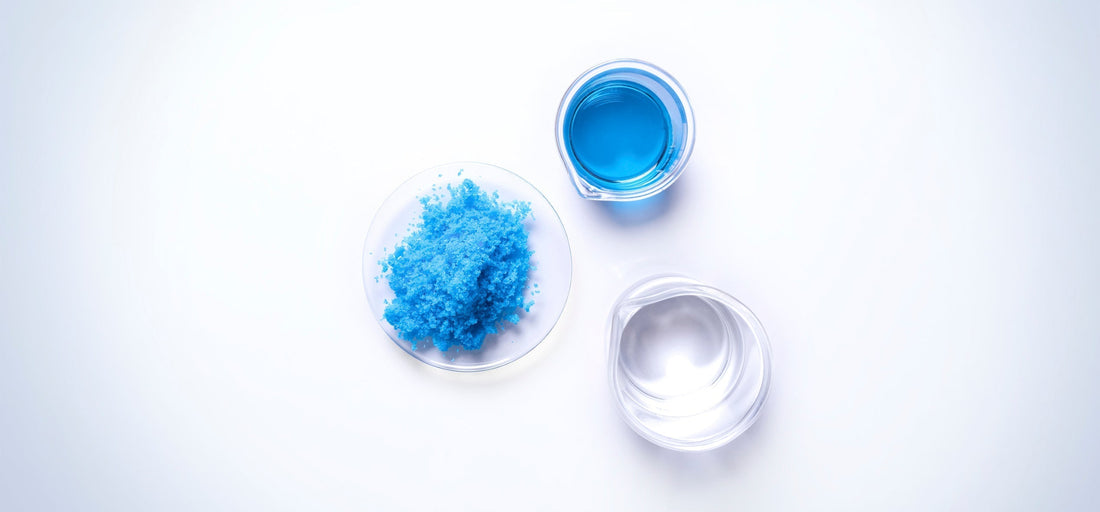In the constantly evolving world of skincare, innovative ingredients are crucial for achieving glowing, healthy skin. Among the latest breakthroughs, Methylene Blue stands out as a powerful ally in the fight against skin aging and damage. This blog post will explore the science behind Methylene Blue, its benefits, and how it can elevate your skincare routine.
What is Methylene Blue?
Originally developed in the late 19th century as a dye and later used as a therapeutic agent, Methylene Blue is gaining recognition in the skincare industry for its remarkable properties. It is a synthetic dye with antioxidant and anti-inflammatory capabilities, making it a versatile ingredient for various skin concerns.
The Science Behind Methylene Blue
Methylene Blue operates at a cellular level, enhancing mitochondrial function—the powerhouse of our cells. By increasing cellular respiration, it promotes more efficient energy production and encourages skin regeneration. This rejuvenating effect is particularly beneficial in combating signs of aging and fatigue.
Key Benefits of Methylene Blue for Your Skin
1. Powerful Antioxidant: Methylene Blue helps neutralize free radicals, which are responsible for skin damage and aging. By minimizing oxidative stress, this ingredient protects your skin from environmental aggressors.
2. Anti-Inflammatory Properties: Inflammation is a common contributor to various skin issues, including acne, rosacea, and eczema. Methylene Blue's anti-inflammatory effects can help soothe irritated skin, bringing relief and promoting a more even complexion.
3. Enhances Wound Healing: Studies suggest that Methylene Blue can accelerate the healing process of wounds and scars, making it an excellent choice for post-acne care or for those dealing with blemishes.
4. Promotes Skin Brightness: With its unique ability to reduce discoloration and even skin tone, Methylene Blue can enhance radiance, giving your skin a vibrant and youthful glow.
How to Incorporate Methylene Blue into Your Routine
To harness the power of Methylene Blue, look for products formulated with this ingredient. Here we feature two products, the Renue Blue Face Serum and the Renue Blue Face Cream.
Here are some tips for incorporating these products into your skincare routine:
• Serum Application: Apply one to two pumps of the Renue Blue Face Serum after cleansing and toning. This allows for deeper absorption and maximizes its benefits.
• Layering: Follow your serum with the Renue Blue Face Cream, a moisturizer to lock in hydration and support the benefits of Methylene Blue.
• Complementary Ingredients: Both Renue Blue products pair Methylene Blue with other novel active ingredients such as a Liposomal NAD+ Complex, Resveratrol, and Apocynin for a synergistic effect that boosts your overall skincare results.
Conclusion
Methylene Blue is more than just a trend—it's a scientifically backed ingredient that delivers numerous benefits for your skin. By incorporating products with Methylene Blue into your daily routine, you're investing in healthier, brighter, and more resilient skin. Embrace the power of this remarkable ingredient and experience the transformation for yourself!
References
1. López, M. V., et al. (2021). Methylene Blue as a Therapeutic Agent in Dermatology: A Review. Dermatologic Therapy, 34(5), e15036.
o This review discusses the applications and benefits of Methylene Blue in various dermatological conditions.
2. Teske, R. F., et al. (2018). The Role of Methylene Blue in Anti-aging and Rejuvenation Treatments. Journal of Cosmetic Dermatology, 17(4), 585-590.
o An insightful article covering the anti-aging properties of Methylene Blue.
3. Bach, D. B., et al. (2019). Methylene Blue as an Antioxidant in Skin Irritants. Journal of Dermatological Science, 96(1), 25-30.
o This study highlights Methylene Blue's antioxidant capabilities and its protective effects on the skin.
4. Demarzo, S. E., et al. (2020). Methylene Blue's Role in Wound Healing: Mechanisms and Applications. Wound Repair and Regeneration, 28(3), 345-353.
o This article discusses how Methylene Blue can promote wound healing and tissue regeneration.
5. Pinho, M. R., et al. (2022). Antioxidant and Anti-inflammatory Properties of Methylene Blue in Skin Disorders: A Comprehensive Review. Skin Pharmacology and Physiology, 35(1), 12-21.
o A detailed review focusing on the anti-inflammatory effects of Methylene Blue in treating skin disorders.
These statements have not been evaluated by the Food and Drug Administration.
These products are not intended to diagnose, treat, cure or prevent any disease.


